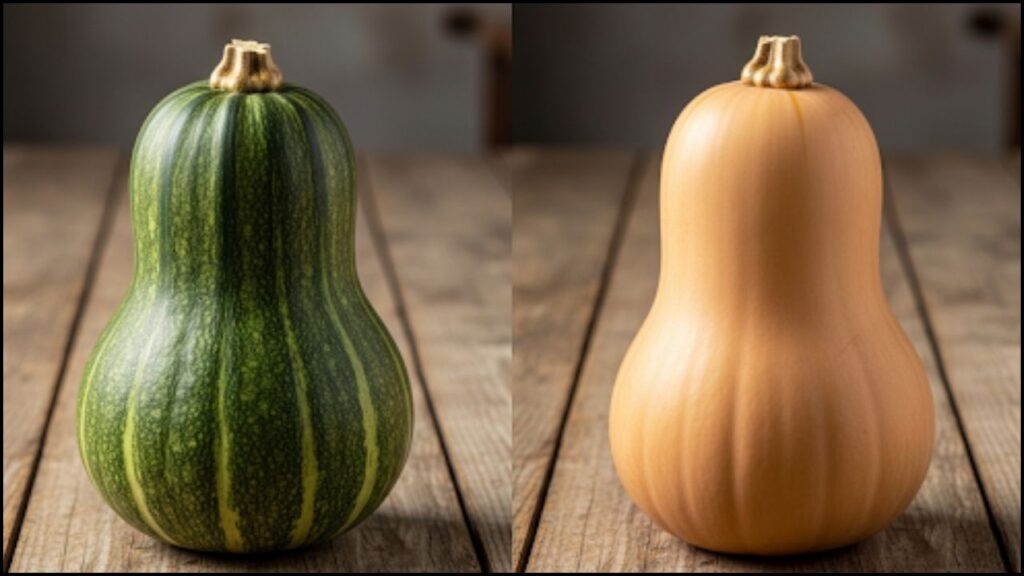
As autumn approaches, gardeners and commercial growers alike are assessing their crops to determine the optimal time for harvest. For many, this includes the butternut squash, a staple of fall cuisine and a versatile, nutritious winter vegetable. Knowing precisely when to harvest is crucial for ensuring the best flavor, texture, and storage life. Agricultural experts emphasize three primary indicators that signal a squash is ready to be picked.
The Three Key Indicators for a Ripe Butternut Squash
1. The Color and Skin Hardness Test
The most reliable visual cue for a ripe butternut squash is its color and the condition of its skin. A mature butternut squash will have a deep, uniform beige or tan color. Any green streaks or patches on the skin indicate that the squash has not fully ripened on the vine. According to Dr. Lena Petrova, a senior horticulturist at the University of California, Davis, this change in pigmentation is a direct result of the squash’s internal sugars fully developing.
“The conversion of starches to sugars and the maturation of the squash’s flesh are mirrored by the skin’s color change,” Petrova explained in a recent university bulletin. “A hard, dull exterior that resists being dented by a fingernail is a clear sign that the skin has formed a protective layer, which is essential for long-term storage.”
To perform the skin test, simply press your fingernail against the squash. If your nail leaves a mark, the squash is likely not ready. If the skin is so hard that your nail cannot pierce it, the squash has reached maturity. This hardened skin is also a key factor in preventing spoilage after harvesting.

2. The Stem’s Condition
The condition of the stem is a critical indicator that growers often overlook. A ripe butternut squash will have a stem that is dry, woody, and cracked. It should not be green or pliable. This change signifies that the squash has completed its growth cycle and the plant is no longer supplying it with nutrients.
Mark Peterson, a fourth-generation farmer and head of the Peterson Family Farm in central Iowa, notes that the stem test is a non-negotiable part of his harvest process. “We wait for that stem to get corky and brown,” Peterson stated in a recent interview with a local agricultural publication. “It’s the plant’s way of telling you that the food supply line has been cut, and the squash is ready to be stored.”
He advises against cutting a squash from a green, fresh-looking stem, as this can leave an open wound, making the squash susceptible to rot and reducing its shelf life. Peterson recommends using a sharp knife or pruning shears to cut the stem, leaving a few inches attached to the squash itself. This small “handle” further protects the vegetable from decay.
3. Time Since Planting and Vine Condition
While color and stem condition are the most direct indicators, the time elapsed since planting and the state of the vine also provide important context. Most butternut squash varieties require approximately 90 to 120 days from planting to reach full maturity. This general timeframe can be affected by local climate conditions, sunlight exposure, and soil quality.
When the squash is approaching ripeness, the vine and leaves will begin to wither and turn brown. This natural process is a sign that the plant is nearing the end of its life cycle and has transferred all its energy to the developing fruit. According to the Cornell University Extension, harvesting should occur before the first hard frost, as freezing temperatures can damage the fruit’s integrity and compromise its storage potential.
Harvest and Curing for Long-Term Storage
After harvesting, the butternut squash should be “cured.” Curing is a process of allowing the squash to sit in a warm, well-ventilated area for approximately 10 to 14 days. This step hardens the skin further, seals any minor cuts, and enhances the flavor by converting starches to sugars. “Curing is not optional for winter squashes,” said Sarah Jenkins, a food preservation specialist with the National Institute of Food and Agriculture (NIFA). “It significantly extends their shelf life, sometimes by several months, and concentrates the flavor, resulting in a more delicious product.”
The ideal curing environment is a space with a temperature of around 80 to 85 degrees Fahrenheit (27 to 29 degrees Celsius) and a relative humidity of 80 to 85 percent. After curing, the squash should be moved to a cool, dark, and dry place with temperatures between 50- and 60-degrees Fahrenheit (10 to 15 degrees Celsius) for storage.
The Importance of Proper Harvesting
Properly timed harvesting and post-harvest curing can mean the difference between a squash that lasts a few weeks and one that can be enjoyed throughout the winter. It is a critical step in the agricultural process, impacting everything from food waste to the consumer’s experience. With global food supply chains facing increasing pressure, maximizing the longevity of crops like butternut squash is more important than ever.
Unveiling the Pulasan Fruit Powerhouse: Malaysia Emerges as Leading Producer
